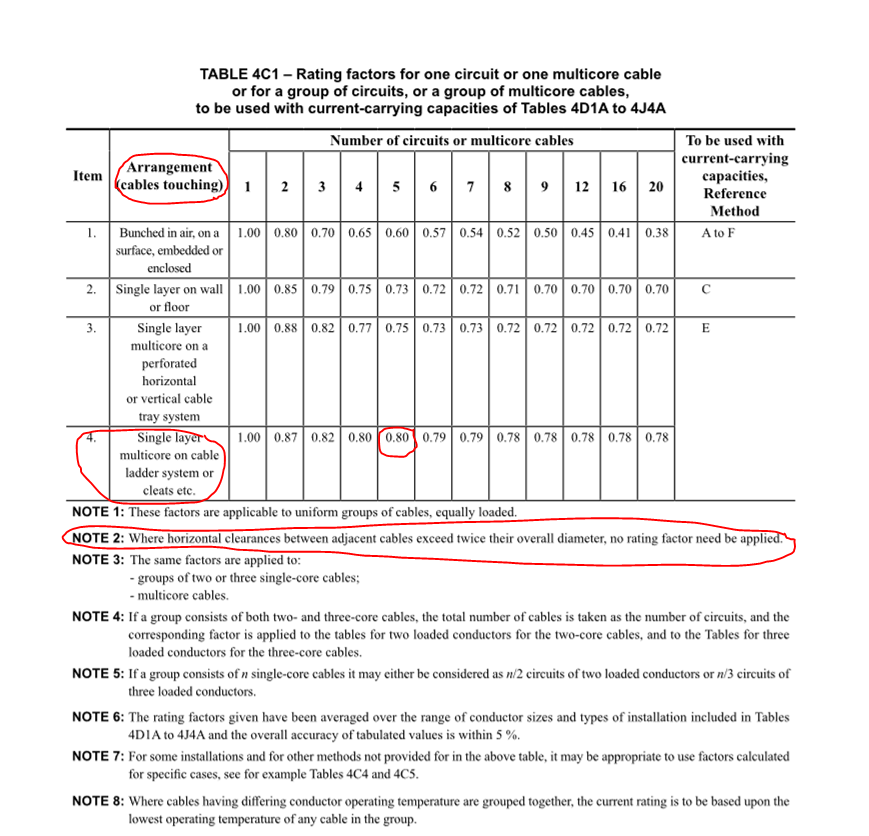Hi All,
I need some assistance in understand the inconsistency between BS 7671 Table 4C1 and Table 4C4. The installation in question consists of 5 No. mulitcore cables mounted on a single cable ladder (so Reference Method E). To avoid applying derating factors for grouping I believe I need to space the cables at 2 Cable OD apart, in accordance with Table 4C1 Note 2 . My interpretation of Note 2 is that if the cables are spaced at less than 2OD then derating must be applied and in my case/installation this would be 0.8 for 5 cables. i have highlighted the relevant information in the following image:

However with reference to Table 4C4, if I space the cables at 1 Cable OD apart then I need not apply a derating factor, again relevant information highlighted in red below:
I feel as though I am missing an important point - any help to clarify this gratefully received!

